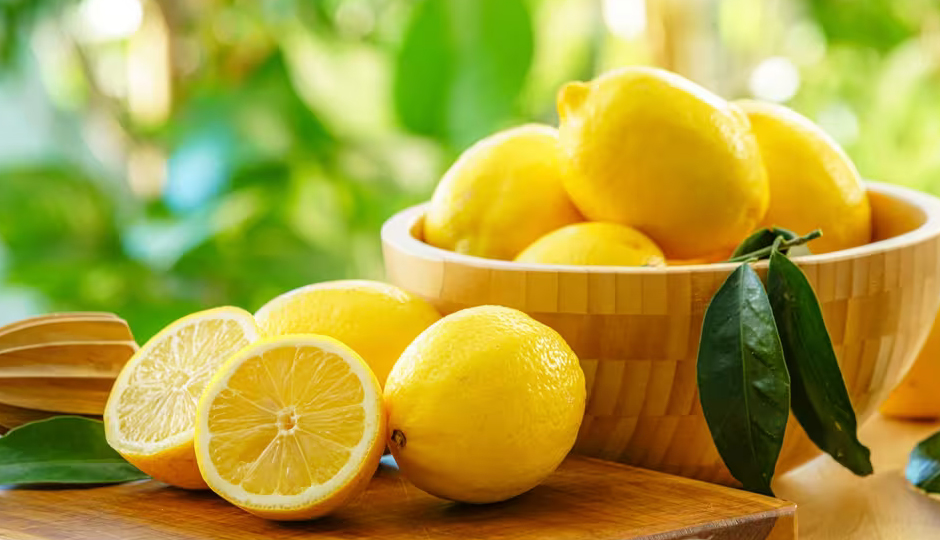- Home›
- Healthy Living›
- 5 Effective Yoga Poses To Treat Bronchitis
5 Effective Yoga Poses To Treat Bronchitis
By: Priyanka Maheshwari Fri, 23 Feb 2024 11:15:37
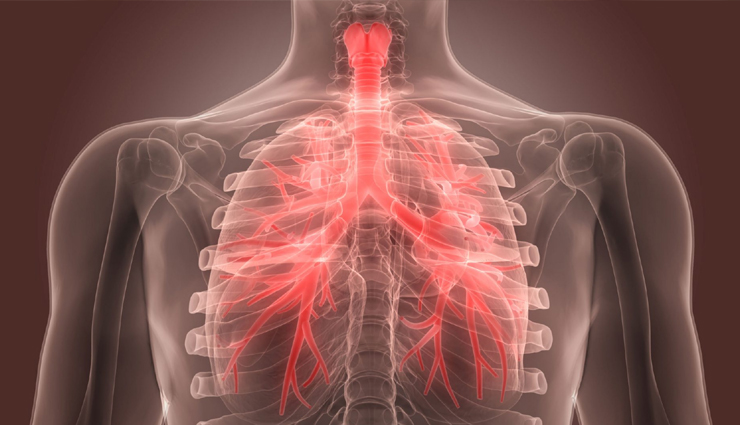
Yoga is a versatile remedy that can address a variety of ailments, including bronchitis, which afflicts millions of people. Regardless of age, bronchitis can affect anyone, manifesting through symptoms such as shortness of breath and persistent nighttime coughing.
When bronchitis strikes, it's essential to take action. However, there's no need to panic. Through the practice of specific yoga poses outlined below, you can effectively manage and alleviate bronchitis symptoms, ultimately relieving yourself from discomfort.
But before delving into the yoga poses, let's first understand bronchitis.
What exactly is bronchitis?
Bronchitis occurs when the bronchial tubes, responsible for transporting air from the windpipe to the lungs, become inflamed and swollen. This inflammation disrupts the flow of air, a fundamental life force for the body. The accompanying symptoms often include coughing and the production of mucus.
Bronchitis can stem from various causes, including colds, flu, and bacterial infections. As the body fights off these germs, the bronchial tube linings may become further inflamed, constricting airflow and exacerbating breathing difficulties.
To alleviate bronchitis symptoms, including congestion and difficulty breathing, integrating yoga into your routine can be immensely beneficial. Read on to discover why yoga serves as an effective remedy for bronchitis.
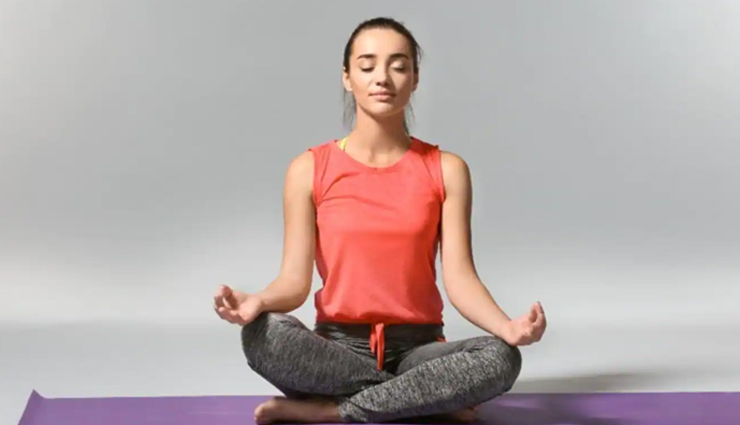
# Sukhasana (Easy Pose)
Sukhasana, also known as the Easy Pose, is a foundational seated yoga posture that promotes relaxation, grounding, and flexibility. Here are the steps to perform Sukhasana:
- Preparation: Find a quiet and comfortable space to practice. Sit on a yoga mat or a firm cushion to provide support and cushioning for your spine and hips.
- Seated Position: Sit down on the mat with your legs extended in front of you.
- Cross-Legged Position: Bend your knees and bring your legs towards your body. Cross your shins, bringing one foot in front of the other.
- Alignment: Ensure that your knees are stacked directly over your ankles and your shins are crossed comfortably. Your legs should form a triangle shape with the mat.
- Neutral Pelvis: Place your hands on your knees or thighs. Sit up tall with a straight spine, keeping your pelvis in a neutral position. Engage your core muscles slightly to support your lower back.
- Shoulder Alignment: Roll your shoulders back and down, opening your chest. Relax your shoulders away from your ears.
- Chin Parallel to the Floor: Keep your chin parallel to the floor and your gaze forward. Lengthen through the crown of your head, reaching towards the ceiling.
- Hand Placement: Rest your hands on your knees, thighs, or in your lap. You can choose to place your palms facing up for a receptive energy or down for a grounding sensation.
- Breathing: Take slow, deep breaths in and out through your nose. Allow your breath to flow naturally, deepening the relaxation with each exhale.
- Relaxation: Soften your facial muscles, jaw, and tongue. Close your eyes if comfortable, or maintain a soft gaze.
- Duration: Hold the pose for 1-5 minutes or longer, depending on your comfort level and practice.
- Release: To release the pose, gently uncross your legs and extend them in front of you. Shake out your legs if needed before transitioning to the next pose or concluding your practice.
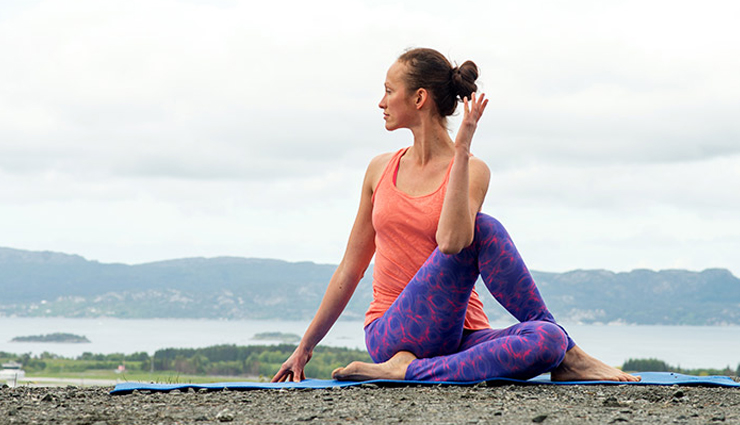
# Ardha Matsyendrasana (Half-Spinal Twist)
Ardha Matsyendrasana, commonly known as Half-Spinal Twist, is a seated yoga pose that provides a deep stretch to the spine, shoulders, and hips while improving digestion and detoxification. Here are the steps to perform Ardha Matsyendrasana:
- Starting Position: Begin by sitting on the floor with your legs extended in front of you (Staff Pose), ensuring that your spine is tall and your shoulders are relaxed.
- Bend the Knees: Bend your knees and place your feet flat on the floor, keeping them together.
- Cross the Legs: Slide your left foot under your right leg to the outside of your right hip. Your left foot should be flat on the floor.
- Twist to the Right: Lift your right foot and place it on the outside of your left knee, with your right knee pointing towards the ceiling.
- Grounding: Ensure that both sit bones are firmly rooted into the floor, providing a stable foundation for the twist.
- Lengthen the Spine: Inhale and elongate your spine, lifting through the crown of your head.
- Twist to the Right: Exhale and twist your torso to the right, bringing your left elbow to the outside of your right knee. Place your right hand on the floor behind you for support.
- Gaze Over the Shoulder: Turn your head to the right, gazing over your right shoulder. Keep your chin parallel to the floor and your neck long.
- Breathing: Take deep, steady breaths as you hold the twist, allowing the breath to facilitate the release of tension in the spine.
- Maintain Alignment: Keep both hips grounded and your spine tall throughout the twist. Avoid collapsing into the shoulders or rounding the spine.
- Hold the Pose: Hold Ardha Matsyendrasana for 30 seconds to 1 minute, breathing deeply and maintaining awareness of your body.
- Release and Repeat: To release the pose, slowly unwind from the twist on an exhale, returning to the starting position. Extend both legs in front of you and repeat the pose on the opposite side.
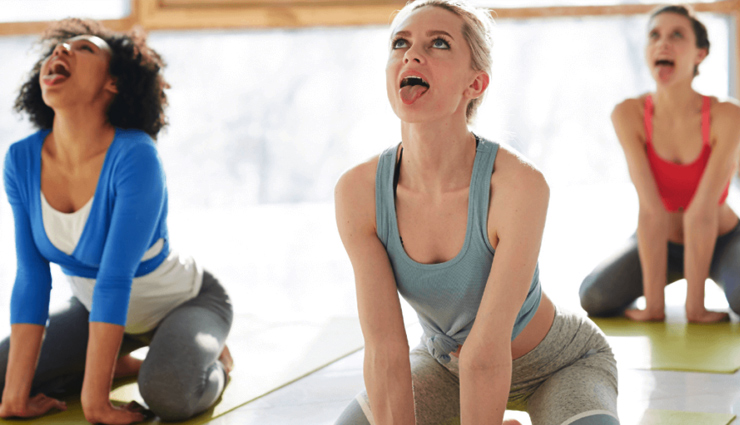
# Simhasana (Lion Pose)
Simhasana, commonly known as Lion Pose, is a powerful yoga posture that helps release tension in the face, throat, and chest while stimulating the throat chakra. Here are the steps to perform Simhasana:
- Starting Position: Begin by coming into a comfortable kneeling position on your mat. Keep your knees hip-width apart and your thighs perpendicular to the floor. Place the tops of your feet flat on the mat.
- Hands on Thighs: Rest your hands on your thighs, palms facing down. Spread your fingers wide for stability.
- Straighten the Arms: On an inhalation, straighten your arms, lifting your chest and lengthening your spine. Engage your core muscles to support your lower back.
- Open the Mouth: As you exhale, open your mouth wide, sticking out your tongue as far as it will go towards the chin. Keep your facial muscles relaxed.
- Roaring Breath: Inhale deeply through your nose, then exhale forcefully through your mouth, making a "ha" sound similar to a lion's roar. Allow your breath to be audible and powerful.
- Eye Focus: Fix your gaze at the point between your eyebrows (the third eye), or slightly above if that feels more comfortable.
- Lion Face: As you exhale, stretch your facial muscles, widening your eyes, and wrinkling your forehead. Open your mouth wide, stretching your tongue downward towards your chin.
- Stretching the Hands: Optionally, extend your fingers outward like claws, spreading them wide apart.
- Hold the Pose: Hold Simhasana for 15-30 seconds, maintaining the roar breath and the facial expression.
- Release: To release the pose, relax your facial muscles and close your mouth. Lower your hands back to your thighs and return to a neutral kneeling position.
- Repeat: Repeat the pose 2-3 times, taking breaks in between if needed.
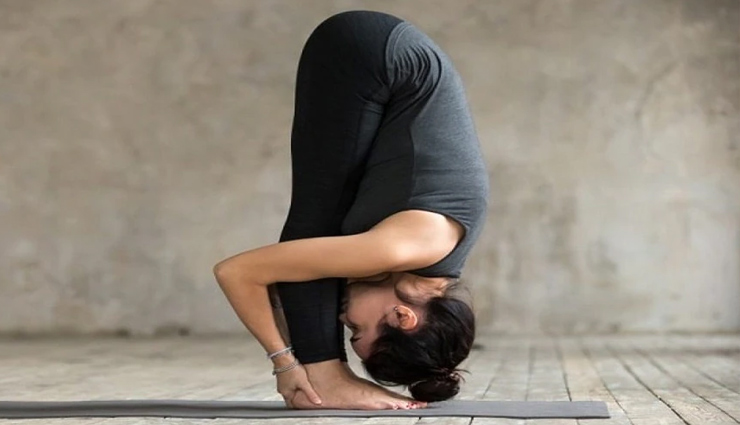
# Uttanasana (Standing Forward Bend)
Uttanasana, commonly known as Standing Forward Bend, is a rejuvenating yoga pose that stretches the entire back body, from the heels to the spine and neck. Here are the steps to perform Uttanasana:
- Starting Position: Begin by standing tall at the front of your mat in Tadasana (Mountain Pose). Keep your feet hip-width apart, with your toes pointing forward. Engage your thighs and core muscles.
- Alignment: Root down through your feet, distributing your weight evenly between both feet. Lengthen your spine, lifting through the crown of your head, and roll your shoulders back and down.
- Inhale and Reach Up: On an inhalation, raise your arms overhead, reaching towards the sky. Keep your arms parallel to each other and your shoulders relaxed away from your ears.
- Exhale and Fold Forward: On an exhalation, hinge at your hips and fold forward from your waist, keeping your spine long. Lead with your chest as you lower your torso towards your thighs.
- Hand Placement: Place your hands on the floor beside your feet. If you're unable to reach the floor, you can place your hands on yoga blocks or bend your knees slightly.
- Relaxation: Allow your head to hang heavy, releasing any tension in your neck and shoulders. Let your arms and upper body relax completely.
- Bend the Knees: If you feel any strain in your lower back or hamstrings, you can bend your knees slightly to alleviate tension. Focus on lengthening your spine and reaching your sitting bones toward the ceiling.
- Breathing: Take slow, deep breaths as you hold the pose, allowing your breath to deepen the stretch with each exhale. Keep the breath steady and smooth.
- Hold the Pose: Hold Uttanasana for 30 seconds to 1 minute, or longer if comfortable. Relax into the pose and surrender to the stretch.
- Release: To release the pose, engage your core muscles and inhale as you slowly rise back up to standing. Keep your spine long as you come back to Tadasana.
- Rest: Take a moment to stand tall in Tadasana and notice the effects of the pose on your body and breath.
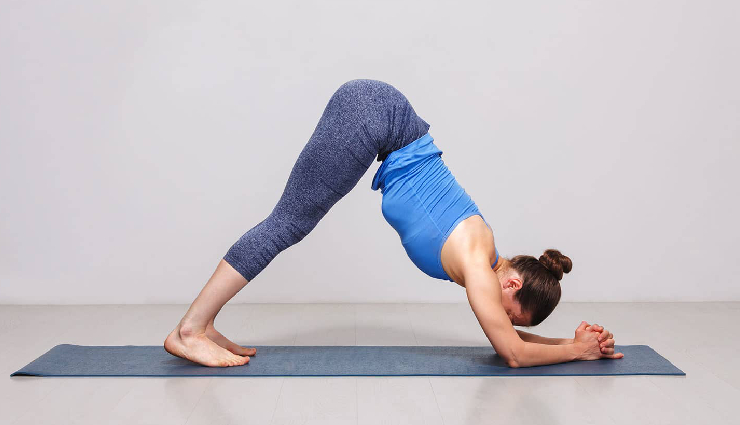
# Ardha Pincha Mayurasana (Dolphin Pose)
Ardha Pincha Mayurasana, commonly known as Dolphin Pose, is a rejuvenating yoga posture that strengthens the arms, shoulders, and core while stretching the hamstrings and calves. Here are the steps to perform Ardha Pincha Mayurasana:
- Starting Position: Begin on your hands and knees in a tabletop position (Box Pose) on your yoga mat. Align your wrists directly under your shoulders and your knees under your hips.
- Forearm Placement: Lower your forearms to the mat, keeping them parallel to each other and shoulder-width apart. Your elbows should be directly beneath your shoulders.
- Interlace Fingers: Clasp your hands together, forming a triangle shape with your forearms and hands. Ensure that your palms are firmly pressed against each other.
- Adjust Elbows: Check that your elbows are not splaying out to the sides but remain in line with your shoulders.
- Tuck Toes and Lift Hips: Tuck your toes under and lift your hips upward towards the ceiling, coming into an inverted V shape. Straighten your arms and legs as much as possible without locking the joints.
- Lengthen Spine: Press firmly into your forearms and lift your shoulders away from your ears. Lengthen your spine, reaching your tailbone towards the ceiling and your heels towards the floor.
- Engage Core: Draw your navel towards your spine to engage your core muscles. Keep your abdomen firm to support your lower back.
- Relax Head and Neck: Allow your head to hang freely between your arms, with your gaze directed towards your feet or slightly back towards your knees.
- Heel Placement: Aim to bring your heels as close to the floor as possible while keeping your legs straight. If your heels do not touch the ground, that's okay—focus on the stretch in your hamstrings and calves.
- Breathing: Take slow, deep breaths as you hold the pose, allowing your breath to facilitate the stretch and release tension in the body.
- Hold the Pose: Hold Ardha Pincha Mayurasana for 30 seconds to 1 minute, or longer if comfortable. Focus on maintaining stability and alignment throughout the pose.
- Release: To release the pose, gently lower your knees to the mat, coming back into a tabletop position. Rest in Child's Pose (Balasana) or Corpse Pose (Savasana) to relax and integrate the benefits of the pose.




